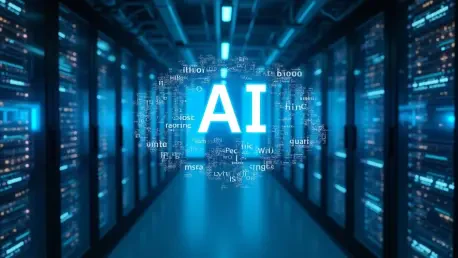Current data indicates that the integration of artificial intelligence (AI) into enterprise systems is a task fraught with complexities, requiring careful planning, strategic execution, and realistic expectations. Promising advances in AI technologies set the stage for businesses to explore operational efficiencies and innovation across sectors. Yet, successful adoption hinges on understanding potential hurdles and embracing developer-led initiatives as key drivers for change. In this analysis, we dissect the ongoing market trends related to AI integration within enterprises, offering insights on how developers catalyze progress despite challenges inherent to large-scale organizational transitions.
Historical Context and Changing Market Dynamics
Enterprises have historically grappled with adopting new technologies, marked by shifts from mainframes to cloud computing and big data solutions. Developers were pivotal in these transformations, navigating both technological and operational spheres to align innovations with business goals. This historical trajectory provides vital context for today’s AI adoption challenges, echoing past patterns where developer ingenuity initially paved the way for broader acceptance. Enterprises transitioning to AI must similarly capitalize on developer innovation, acknowledging their role as change agents essential to reshaping corporate landscapes.
Developers’ Role in AI Integration
Developers are increasingly recognized as strategic figures capable of bridging AI technology and enterprise needs. By crafting bespoke solutions and actionable insights, developers translate abstract AI capabilities into tangible business applications. Case studies exemplify this trend, with firms like Palantir delivering customized AI initiatives that effectively address specific enterprise goals. The complexities involved, such as scalability and integration challenges, further cement developers’ indispensable role in navigating these multifaceted scenarios. Their expertise facilitates proactive approaches to enterprise AI deployments, overcoming obstacles in system compatibility and usability.
Risk Assessment and Strategic Approaches
Balancing risk and reward is a critical aspect of enterprise AI endeavors. Developers employ their technical proficiency to assess emerging AI technologies and identify those with significant potential and manageable risks. Practical applications like supply chain optimization illustrate immediate gains against privacy or cybersecurity challenges. Developers’ analytical skills support enterprises in conducting thorough risk assessments, enabling informed decisions on AI integration. This foresight ensures AI systems enhance enterprise operations without compromising data security or regulatory compliance.
Innovative Solutions and Regulatory Considerations
As enterprises grapple with diverse regulatory landscapes and innovative methodologies, developers stand at the forefront of maneuvering these complexities. Regional differences, unique compliance issues, and disruptive innovations create intricate pathways for AI implementation. Developers focus on developing location-specific solutions, applying methods like federated learning to address regulatory hurdles. Their adaptive strategies counter misconceptions about AI’s limitations, empowering enterprises to navigate evolving market dynamics and sustain AI-driven advancements.
Emerging Trends and Projections
Developer-led initiatives are poised to influence future AI integration, with advancements such as natural language processing and autonomous systems set to transform business operations. These technologies offer profound opportunities to redefine enterprise strategies, provided developers capitalize on innovative applications. Forecasts suggest rising AI adoption rates and encouraging regulatory shifts, underscoring the importance of developers as key participants in transitioning enterprises toward AI-driven futures. Their involvement remains integral, contributing to adaptive solutions that align with organizational visions.
Strategic Insights for AI Integration
Successful enterprise AI integration requires strategic insights guided by developer contributions. Starting with focused, high-value projects ensures enterprises minimize resource strains while showcasing AI’s potential. Iterative development cycles, maintaining dynamic feedback loops, foster environments conducive to effective AI deployment. Empowering developers to lead these projects cultivates effective initiatives that resonate with enterprise goals, ensuring sustainable scaling and robust integration. Setting a culture of experimentation and embracing developer-led ownership in AI pursuits constitute critical factors for future success.
Reflections and Strategic Recommendations
Integrating AI into enterprises has historically mirrored trends in embracing new technologies through gradual and calculated approaches. The slow yet steady uptake reflects historical patterns, highlighting initial difficulties while affirming developers’ prominence in steering meaningful adoption. Aligning integration efforts with developer-driven strategies has proven beneficial, urging enterprises to focus on practical applications and value-driven projects. Building upon developer interest and enduring through transitional challenges positions enterprises favorably on AI advancement curves, rather than relying solely on top-down implementations. Developers remain pivotal figures in navigating these transformations, ensuring enterprises harness AI potential effectively, fostering lasting growth.









